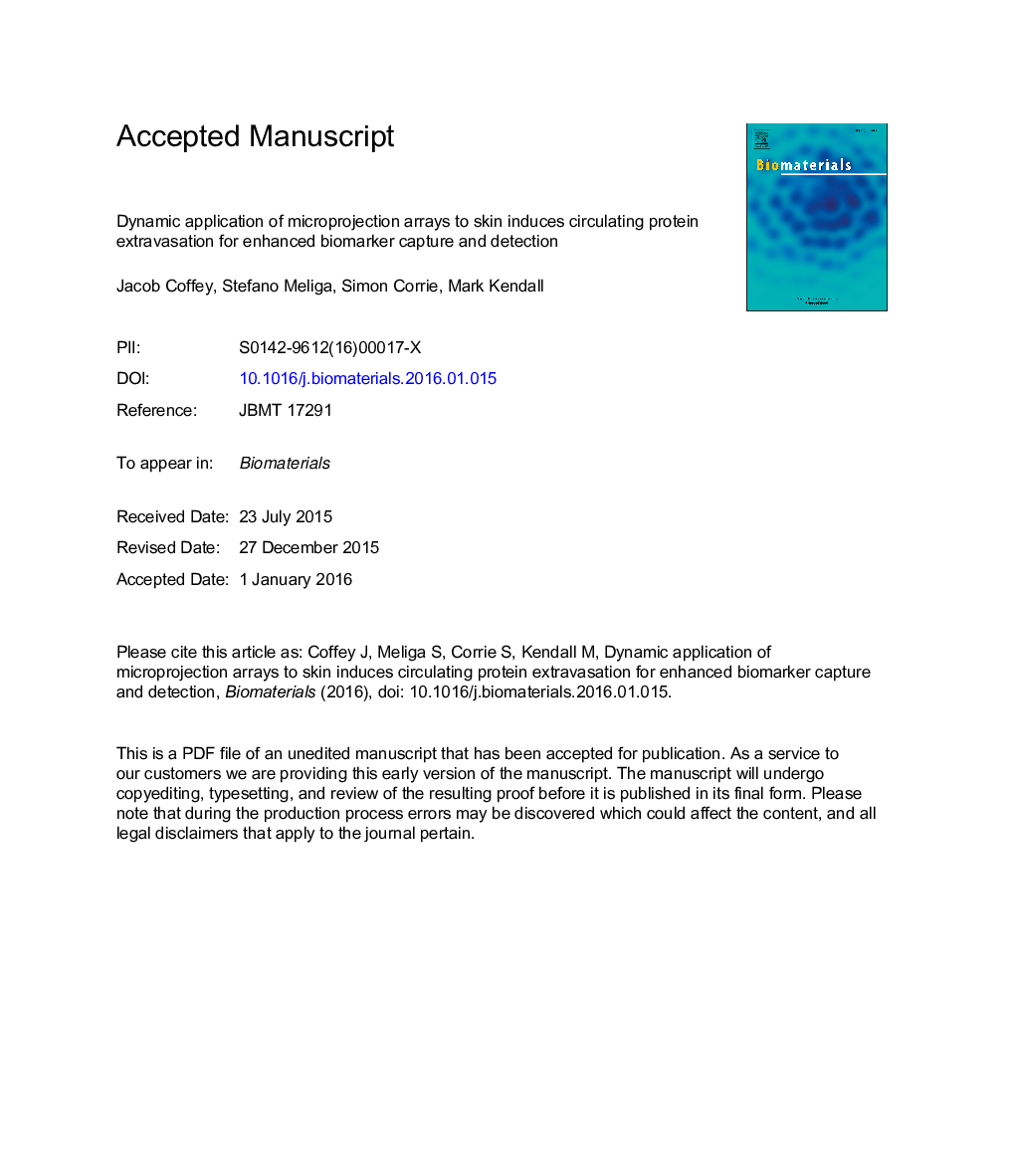| Article ID | Journal | Published Year | Pages | File Type |
|---|---|---|---|---|
| 6485078 | Biomaterials | 2016 | 46 Pages |
Abstract
Surface modified microprojection arrays are a needle-free alternative to capture circulating biomarkers from the skin in vivo for diagnosis. The concentration and turnover of biomarkers in the interstitial fluid, however, may limit the amount of biomarker that can be accessed by microprojection arrays and ultimately their capture efficiency. Here we report that microprojection array insertion induces protein extravasation from blood vessels and increases the concentration of biomarkers in skin, which can synergistically improve biomarker capture. Regions of blood vessels in skin were identified in the upper dermis and subcutaneous tissue by multi-photon microscopy. Insertion of microprojection array designs with varying projection length (40-190 μm), density (5000-20,408 proj.cmâ2) and array size (4-36 mm2) did not affect the degree of extravasation. Furthermore, the location of extravasated protein did not correlate with projection penetration to these highly vascularised regions, suggesting extravasation was not caused by direct puncture of blood vessels. Biomarker extravasation was also induced by dynamic application of flat control surfaces, and varied with the impact velocity, further supporting this conclusion. The extravasated protein distribution correlated well with regions of high mechanical stress generated during insertion, quantified by finite element models. Using this approach to induce extravasation prior to microprojection array-based biomarker capture, anti-influenza IgG was captured within a 2 min application time, demonstrating that extravasation can lead to rapid biomarker sampling and significantly improved microprojection array capture efficiency. These results have broad implications for the development of transdermal devices that deliver to and sample from the skin.
Related Topics
Physical Sciences and Engineering
Chemical Engineering
Bioengineering
Authors
Jacob W. Coffey, Stefano C. Meliga, Simon R. Corrie, Mark A.F. Kendall,
